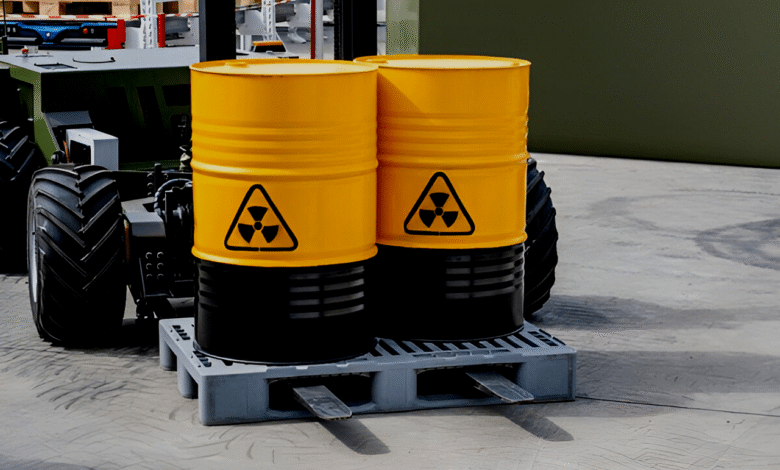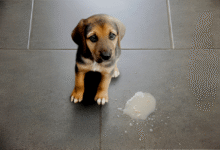
Recognizing Signs of Poisoning in Pets
Recognizing signs of poisoning in pets can save lives Learn symptoms toxins and emergency steps to protect your furry friend Act fast.
Recognizing signs of poisoning in pets is crucial for every pet owner, as early detection can save your furry friend’s life. Pets are naturally curious, often exploring their surroundings with their mouths, which puts them at risk of ingesting toxic substances. From household chemicals to certain plants and human foods, the dangers are numerous. Understanding the symptoms such as vomiting, lethargy, or seizures can help you act swiftly and seek veterinary care before it’s too late.
This guide will walk you through the common toxins, recognizing signs of poisoning in pets, and the immediate steps to take if you suspect your pet has been exposed. Whether you’re a new pet parent or a seasoned owner, being informed about these risks and symptoms can make all the difference in ensuring your pet’s safety and well-being. Let’s dive into the essential knowledge every pet owner should have to protect their beloved companion.
Recognizing Signs of Poisoning in Pets A Comprehensive Guide
Human Foods Can Be Deadly
Chocolate contains theobromine, which can cause vomiting, seizures, and even death in dogs. Grapes & raisins even in small amounts may lead to sudden kidney failure, while xylitol (found in sugar-free gum, candy, and peanut butter) triggers a dangerous insulin Signs of Poisoning, resulting in life-threatening low blood sugar. Always keep these foods far from pets and seek immediate vet care if ingested.
Household Chemicals & Medications Pose Serious Risks
Antifreeze (ethylene glycol) is extremely dangerous even a tiny amount can cause irreversible kidney failure in pets. Rodenticides (rat poison) often contain blood thinners or neurotoxins, leading to internal bleeding, seizures, or death if Signs of Poisoning. Additionally, human painkillers like ibuprofen and acetaminophen can trigger stomach ulcers, liver damage, or destroy red blood cells in animals. Always store these substances securely and seek emergency veterinary care immediately if exposure occurs.
Toxic Plants & Pesticides Are Hidden Dangers
Lilies are extremely toxic to cats even minor contact with pollen or petals can cause fatal kidney failure within hours. Sago palms pose a severe risk to dogs, as their cycasin toxin rapidly attacks the liver, often with deadly consequences. Many Signs of Poisoning, including snail baits and improperly applied flea treatments, can trigger violent tremors, seizures, or respiratory collapse in pets. Immediate veterinary intervention is critical for any exposure to these deadly hazards.
Symptoms of Poisoning in Pets
Gastrointestinal Distress
Gastrointestinal disease symptoms like vomiting, diarrhea, excessive drooling, or sudden loss of appetite are often the first red flags of poisoning in pets, as these signs typically appear when an animal has ingested something toxic. The severity can range from mild irritation to life-threatening conditions depending on the substance and amount Signs of Poisoning, so it’s crucial to monitor your pet closely and contact your veterinarian immediately if these symptoms develop, especially if you suspect they’ve been exposed to poisonous materials. Early intervention greatly improves the chances of successful treatment and recovery.
Neurological Abnormalities
Neurological symptoms like seizures, uncontrolled muscle tremors, disorientation, or sudden extreme lethargy are particularly dangerous signs of poisoning, indicating that toxins have begun attacking your pet’s nervous system. These symptoms often appear rapidly and can escalate to life-threatening conditions, so immediate veterinary care is critical every minute counts when dealing with neurotoxic substances, as they can cause permanent damage or prove fatal without prompt treatment. If your pet displays any of these alarming neurological signs, rush them to an emergency vet while keeping them calm and safe from injury during seizures or tremors.
Breathing & Heart Complications
Respiratory and cardiac symptoms like labored breathing, persistent coughing, irregular heart rhythms, or sudden collapse are critical emergencies that demand immediate veterinary intervention, as they often indicate severe poisoning affecting oxygen flow or heart Signs of Poisoning. These signs suggest potentially life-threatening conditions such as organ failure, toxin-induced shock, or neurological damage, where delays in treatment could prove fatal keep your pet calm, minimize movement, and seek emergency care without delay to give them the best chance of survival.
Skin & Eye Reactions
Skin and eye reactions such as redness, swelling, blistering, or frantic scratching often indicate your pet has touched or brushed against a toxic irritant, like household chemicals, pesticides, or poisonous plants. These symptoms can escalate quickly, causing severe discomfort or even systemic poisoning if the substance is absorbed through the skin or licked off during Signs of Poisoning. Rinse affected areas immediately with lukewarm water (unless corrosive chemicals are involved, which may require vet guidance), and contact your veterinarian to prevent further complications, as some contact toxins can cause delayed but serious internal harm.
What to Do in Case of Poisoning
In a poisoning emergency, staying calm and acting swiftly is crucial: Immediately remove your pet from the source of toxicity to prevent further exposure, and try to identify the ingested or contacted substance by checking for chewed packaging or residue. Call your veterinarian or a pet poison helpline right away provide details about the toxin, the amount Signs of Poisoning, and any symptoms, but never induce vomiting unless explicitly instructed, as some substances can cause greater damage coming back up. Every second counts, and your composed, rapid response can be the difference between life and death for your beloved companion.
Preventing Poisoning in Pets
Preventing pet poisoning starts with proactive measures: Securely store all chemicals, medications, and toxic foods in cabinets or high shelves your pets can’t access and opt for pet-safe cleaning products and yard treatments to eliminate hidden dangers. Educate everyone in your household including children about common hazards like chocolate, xylitol, and toxic plants, and always supervise outdoor exploration to stop curious pets from nibbling on harmful substances. By creating a pet-aware environment and sticking to vigilant habits, you’ll drastically reduce the risk of accidental poisoning.
Read More: Pet-Friendly Travel Destinations in the U.S.
Conclusion
Recognizing signs of poisoning in pets is a vital skill that can mean the difference between life and death for your beloved companion. By staying vigilant and knowing the common symptoms such as drooling, weakness, tremors, or sudden behavioral changes you can act quickly in an emergency. Always keep your veterinarian’s contact information handy, along with the number for a pet poison helpline, to ensure you’re prepared if the worst happens. Prevention, awareness, and prompt action are the keys to keeping your pet safe from harmful toxins.
In conclusion, recognizing signs of poisoning in pets empowers you to protect your furry family members from hidden dangers in and around your home. Regularly pet-proofing your living space, avoiding toxic foods and plants, and educating yourself on potential hazards will significantly reduce risks. Remember, when in doubt, seek professional help immediately your quick response could save your pet’s life. Stay informed, stay alert, and give your pet the best chance at a long, healthy, and happy life.
FAQs
What are the most common signs of poisoning in pets?
Vomiting, diarrhea, seizures, lethargy, and difficulty breathing are common symptoms. Immediate veterinary care is crucial.
What human foods are toxic to pets?
Chocolate, grapes, onions, garlic, and xylitol are highly toxic and should never be given to pets.
Should I induce vomiting if my pet is poisoned?
Only if instructed by a vet, as some toxins can cause more damage when vomited.
How can I prevent pet poisoning at home?
Store chemicals, medications, and toxic foods securely, and use pet-safe cleaning products.
What should I do if I suspect my pet has been poisoned?
Remove them from the toxin, contact a vet immediately, and provide details about the substance ingested.







